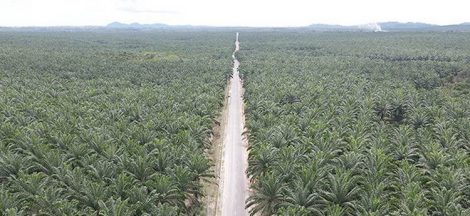Unlike previous years, 2014 was not an easy one for the country’s manufacturing sector as low demand in the global market and the sharp depreciation of the Indonesian currency severely affected the industry.

With soaring operating costs resulting from the sharp drop in the value of the rupiah against the US dollar, higher spending for electricity and labor wages and growing competition in the local market, the country’s automotive industry, for example, failed to achieve its 2014 sales targets of 1.2 million cars.
The sales performance of the automotive industry, one of the manufacturing sector’s biggest contributors to the country’s gross domestic product (GDP), may prove to be a harbinger of the worsening economic conditions that the nation could face in the upcoming months.
The first quarter ended on a bad note: Indonesia, one of the world’s most resilient economies, expanded at only 5.2 percent, below expectations and the slowest pace in nearly five years.
At the same time, car sales — a key indicator of domestic consumption — rose by 10.99 percent to 297,785 units on a yearly basis, compared with growth of 18.7 percent seen in 2013 from 2012.
This trend continued until the final months of last year, with sales from January to November closing at 1.12 million units, slightly less than the 1.13 million booked in the past year.
While automakers struggled hard to gain a strong foothold in the domestic market, they still had a reason to cheer, as exports of cars and auto parts showed an upward trend in the initial months through the final months of this year.
Overseas automotive shipment climbed by 10.84 percent to US$1.27 billion in the first quarter and up to the third quarter it gained well by 13.9 percent to $3.79 billion. This was helped by product diversification with the entry of some new models into the export portfolio, such as sedans and low-cost green cars (LCGC), to Middle Eastern countries and the Philippines, respectively.
Misfortune brought by internal economic woes seems to have reared its head not only in the automotive industry, but also in other industries, sometimes with an even stronger impact because of a heavy reliance on overseas markets.
Domestically, such industries grappled with surging production costs caused by higher labor wages, bigger electricity bills and the steep fall of the currency, with magnitudes varying across sectors.
Rising labor wages, for instance, hit hardest the labor-intensive industrial sectors like textiles and footwear, whereas electricity tariff hikes, which ranged from 38.9 percent to 64.7 percent, severely affected energy-intensive industries like cement and steel. In addition, the decline of the rupiah to beyond Rp 12,000 per US dollar was a discouraging development for manufacturers relying heavily on imported raw materials and intermediary inputs, notably the downstream industries.
On the external side, manufacturers also had to cope with continuing uncertainties in the global economy, which eroded growth and doused appetites in major trading partners such as China, Japan and the EU, despite signs of recovery in the US, a key buyer.
The textile and footwear industries were among those most seriously hurt by both internal and external drivers. From January to August, textile exports remained the same as they were the year before at $8.53 billion, while footwear overseas shipments increased slightly by 1 percent to $2.63 billion, according to the latest statistics issued by the Industry Ministry.
At the start of the new year, the government maintained its upbeat outlook on the prospects of the non-oil manufacturing industry, which is also the backbone of exports, targeting a 6.4 percent growth, similar to 2012.
The growth of large and medium manufacturing production declined to 4.96 percent year-on-year in the third quarter last year, far lower than the 7.29 percent in the same quarter of 2013.
Meanwhile, yearly growth of micro and small manufacturing production reached 5.18 percent in the third quarter, as compared with 4.86 percent in the same period in 2013.
Despite discouraging results in the overall manufacturing sector during the first nine months of 2014, the government still expected the industry to gain in the fourth quarter, particularly boosted by agro-based industries, helping full-year growth to 5.7 percent, according to Industry Ministry secretary-general Anshari Bukhari. (Linda Yulisman, ttp://www.thejakartapost.com/news)





 Rajin Bekerja dan tidak Rewel
Rajin Bekerja dan tidak Rewel 